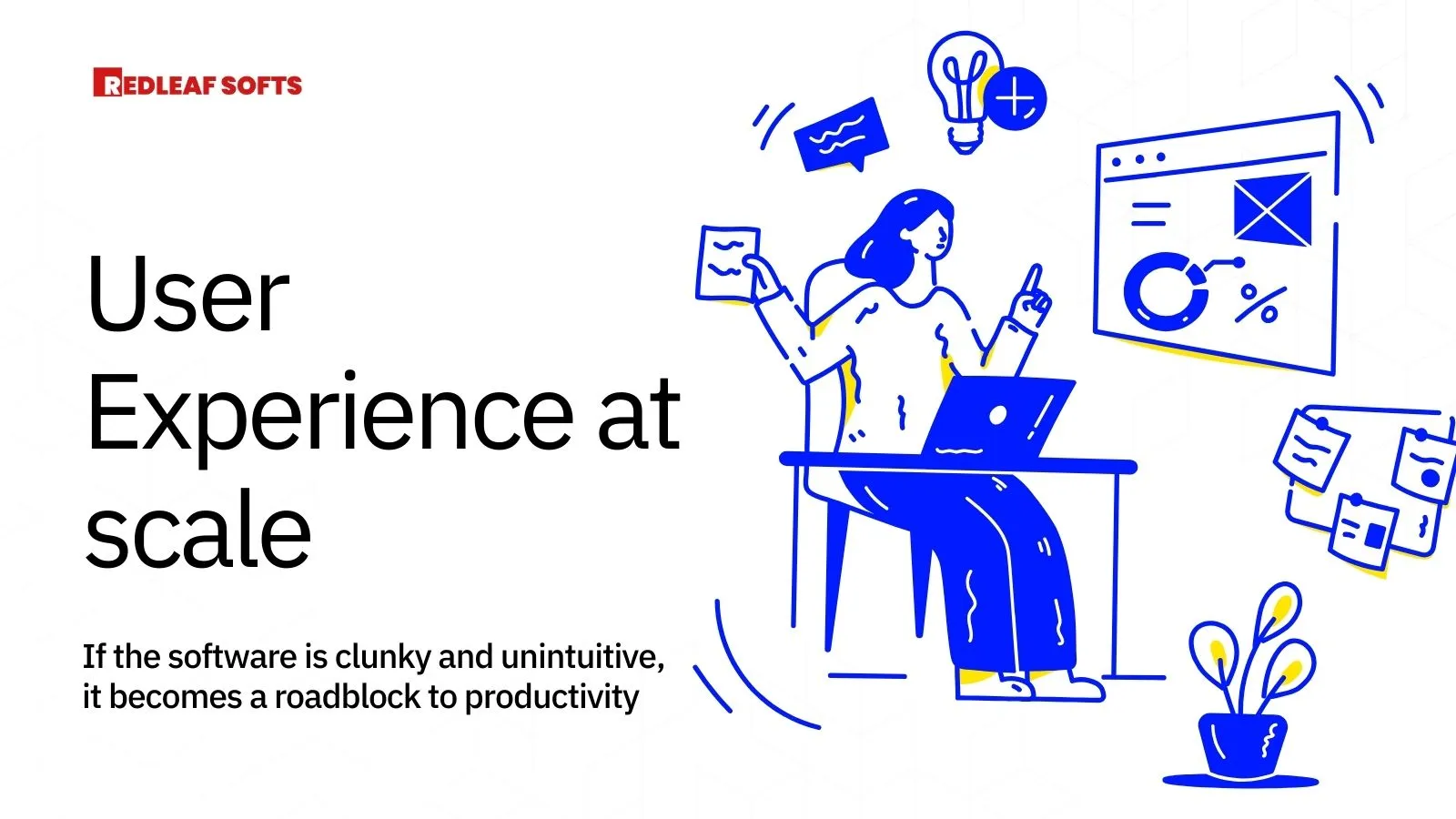In today’s digitally driven world, businesses rely heavily on enterprise software to streamline operations, manage data, and enhance collaboration. However, the success of these tools hinges on one crucial factor: user experience (UX). While flashy features and cutting-edge functionalities might seem impressive, if the software is clunky and unintuitive, it becomes a roadblock to productivity rather than a booster.
This blog delves into the complexities of designing user experience for enterprise software at scale. We’ll explore the unique challenges involved, unpack best practices to ensure intuitive interfaces, and highlight the significant impact a well-crafted UX can have on your organization.
The Challenge: Designing for Diverse Users and Needs
Enterprise software caters to a vast array of users within an organization. From seasoned executives to tech-savvy millennials, each individual possesses varying levels of technical expertise and specific workflows. This diversity presents the first hurdle: designing an interface that caters to all while remaining simple and efficient.
Here are some key considerations:
- Role-based access and permissions: Users shouldn’t be bombarded with features irrelevant to their daily tasks. Granular access control ensures only relevant functionalities are displayed, streamlining the user journey.
- Customization options: Empowering users to personalize their workspace fosters a sense of ownership. Configurable dashboards, custom views, and keyboard shortcuts can significantly enhance individual productivity.
- Learning curve: New features shouldn’t require extensive training or complex manuals. Intuitive design principles, contextual help guides, and progressive disclosure (revealing functionalities only when needed) create a user-friendly experience from day one.
Best Practices for Building Intuitive Enterprise Software
Crafting an intuitive user experience for enterprise software requires a strategic approach. Let’s explore some best practices:
User Research and Persona Development:
Understanding your user base is paramount. Conduct user research through interviews, surveys, and usability testing to identify user needs, pain points, and workflows. This data informs the creation of user personas – detailed profiles representing key user groups – which guide design decisions.
Focus on User Flows and Task Completion:
Map out the core user journeys – the steps users take to complete specific tasks. Imagine a user trying to submit an expense report. How many clicks does it take? Is the process clear and logical? Streamlining user flows for critical tasks minimizes cognitive load and frustration.
Prioritize Simplicity and Consistency:
Don’t overwhelm users with excessive visual clutter or a sea of unfamiliar icons. Utilize a clean, consistent design language throughout the application. Employ design patterns – established UI elements (like menus, buttons, and dropdowns) – that users are familiar with from other software, reducing the learning curve.
Accessibility for All:
Modern enterprise software should be accessible to all users, regardless of ability. Integrate features like keyboard navigation, screen reader compatibility, and clear visual hierarchy to ensure everyone can interact with the software effectively.
Iterative Design and User Testing:
The design process shouldn’t end at launch. Continuously gather user feedback through A/B testing and usability studies. Refine and iterate on the design based on user insights for a constantly improving user experience.
The Impact of a Well-Designed User Experience
Investing in a user-centric approach reaps significant benefits for both businesses and employees.
Increased User Adoption and Productivity:
When software is intuitive and enjoyable to use, employees are more likely to adopt it readily. This translates directly into increased efficiency and productivity across the organization.
Improved Employee Satisfaction:
Frustrating and complex software leads to employee dissatisfaction. A well-designed UX fosters a sense of control and accomplishment, boosting morale and overall employee satisfaction.
Reduced Training Costs:
Intuitive interfaces require minimal training, saving valuable time and resources. Onboarding new employees becomes smoother, allowing them to contribute quickly.
Enhanced Data Quality and Decision-Making:
User-friendly tools encourage data entry and accurate recordkeeping. This, in turn, facilitates better decision-making based on reliable and complete information.
Conclusion:
Designing user experience for enterprise software at scale requires expertise in user research, design principles, and navigating complex workflows. Here at RedLeaf Softs, we understand the importance of creating intuitive and user-friendly interfaces that empower your workforce. Our team of experienced designers and developers works closely with you to understand your unique business needs and craft custom software solutions that deliver a seamless user experience for all.
Ready to unlock the full potential of your workforce with intuitive enterprise software? Contact RedLeaf Softs today and let’s discuss your specific requirements.


